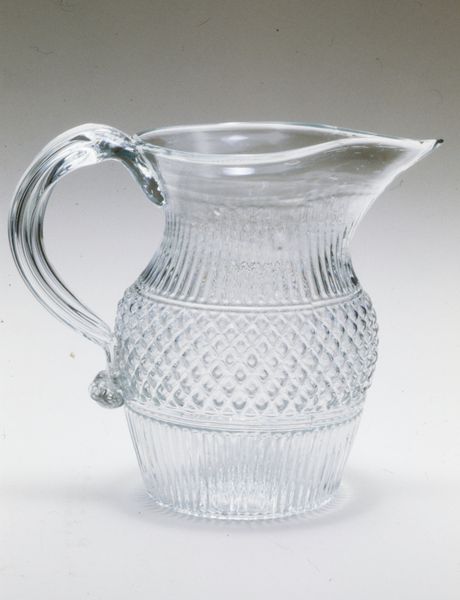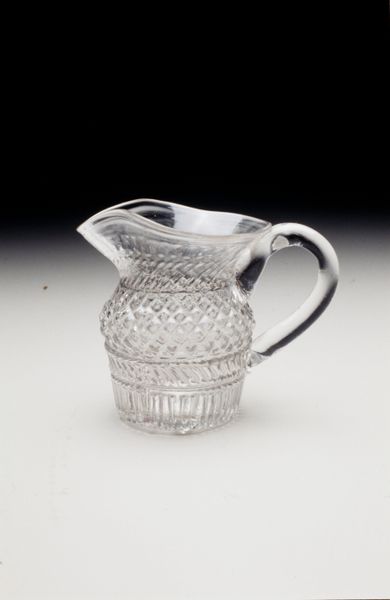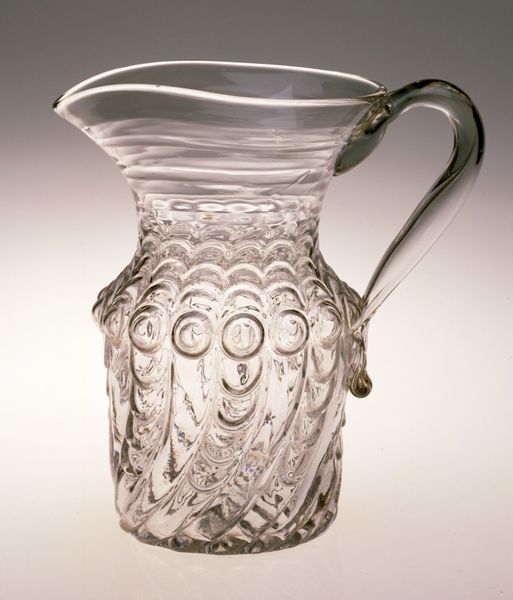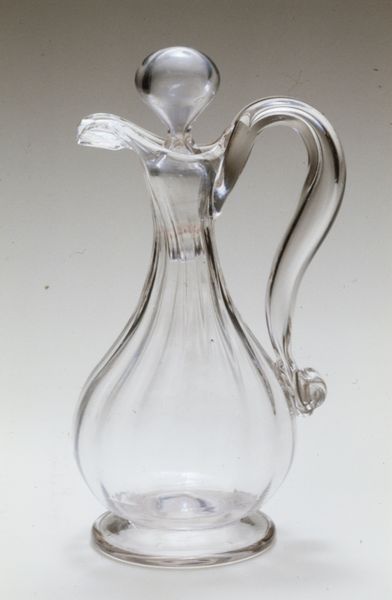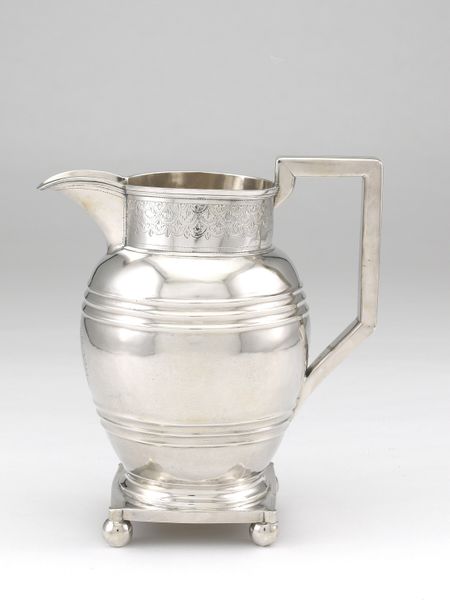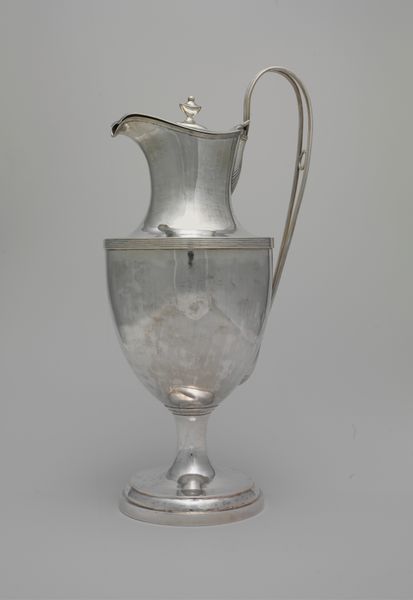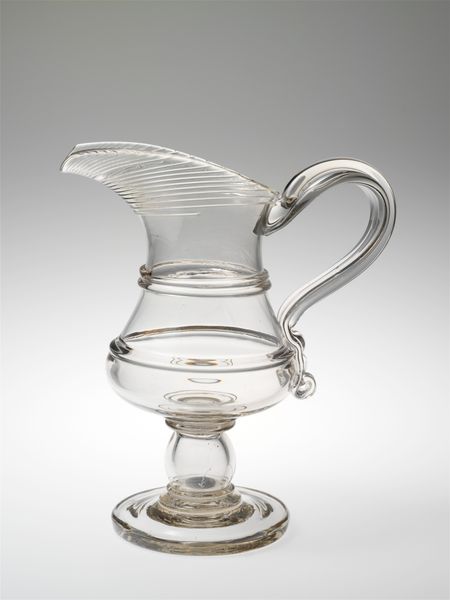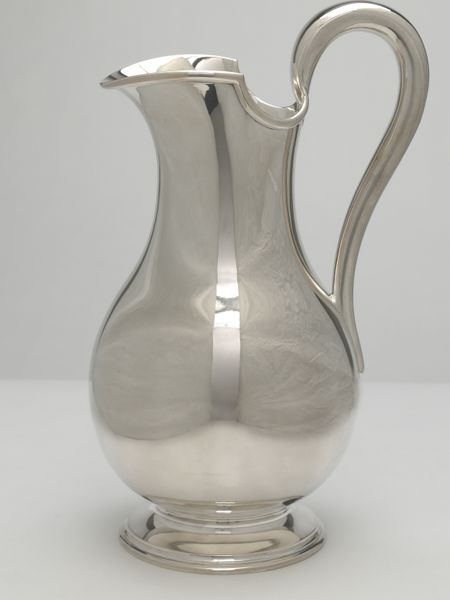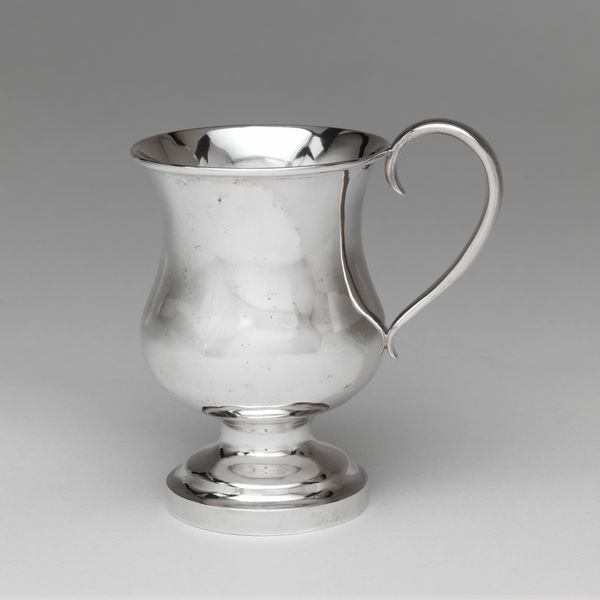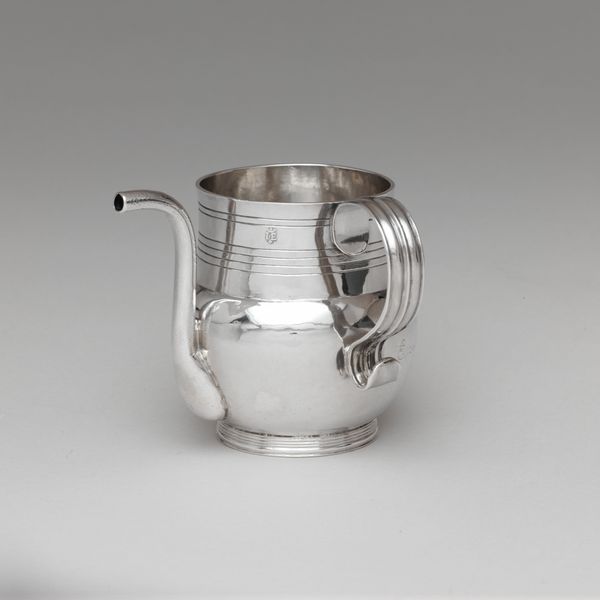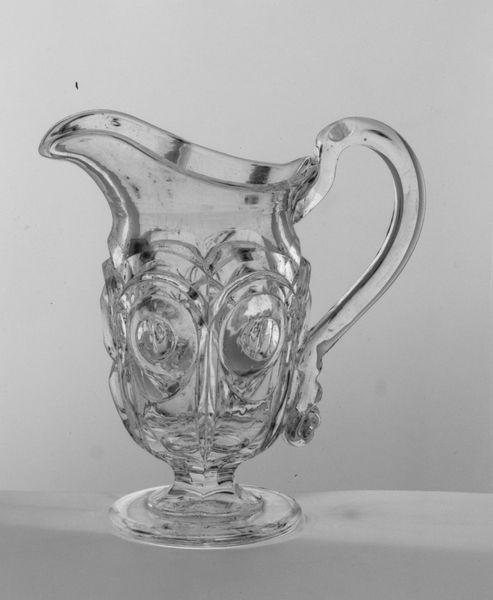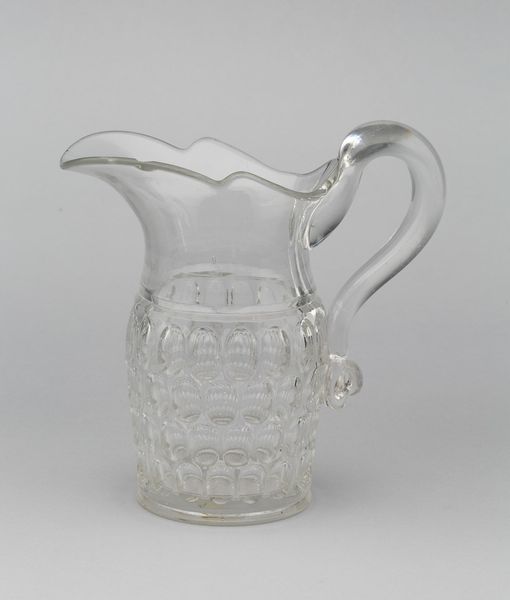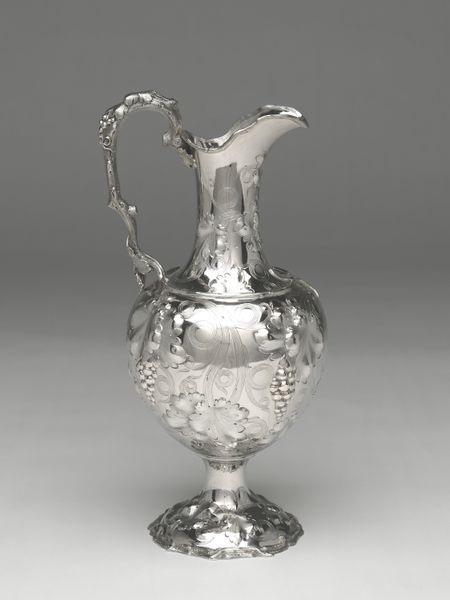
ceramic, glass
#
ceramic
#
glass
#
ceramic
Dimensions: 6 1/4 x 5 3/4 x 4in. (15.9 x 14.6 x 10.2cm)
Copyright: Public Domain
Editor: Here we have a glass pitcher, believed to be from the early 19th century, currently residing at the Minneapolis Institute of Art, by an anonymous artist. What strikes me is how such a functional item seems to have this elaborate design, the swirling texture in the glass base. How do you interpret its design choices? Curator: This pitcher isn’t merely a vessel; it's a reflection of status and changing cultural values in the early 19th century. Think about the period: the rise of the middle class, aspirations of elegance trickling down. Glass, even clear glass, was a signifier. And the swirled decoration, almost like waves – what stories does water hold? How has its presence, in reality and in lore, influenced culture? Editor: I hadn't considered the rise of the middle class and its impact on decorative arts. Does the clarity of the glass have a symbolic weight too, or is it more about showing off the contents? Curator: The transparency does allow you to witness the refreshing qualities of its content, whether it be water or beverage of choice. Early American glassmakers were striving to make glass more refined and clear, as tastes turned towards these lighter vessels. Think of it as a dialogue between form and function, revealing societal values, much like in religious iconography, wouldn't you say? Editor: Definitely. I suppose I often think of iconography as inherently religious, but it's interesting how these symbolic elements manifest in even the simplest of objects, echoing larger cultural shifts. Curator: Precisely! These objects, are cultural artifacts. Every element is layered with symbolism. Editor: Thank you, it’s fascinating to consider these levels of meaning embedded in such a common household item.
Comments
No comments
Be the first to comment and join the conversation on the ultimate creative platform.
